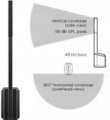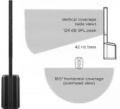Search results
Create the page "Coverage" on this wiki! See also the search results found.
Page title matches

File:F1 Model 812 Coverage Patterns.png (1,405 × 823 (362 KB)) - 05:05, 15 April 2015
File:F1 Model 812 Coverage Patterns-Audience.png (1,405 × 823 (364 KB)) - 05:05, 15 April 2015
File:F1 Coverage Straight.jpg (487 × 312 (22 KB)) - 07:27, 15 April 2015
File:F1 Coverage Reverse J.jpg (487 × 312 (25 KB)) - 07:27, 15 April 2015
File:F1 Coverage C.jpg (487 × 312 (31 KB)) - 07:27, 15 April 2015
File:F1 Coverage J.jpg (487 × 312 (25 KB)) - 07:31, 15 April 2015
File:L1 Pro Vertical Coverage 32s1.jpg (801 × 445 (33 KB)) - 18:42, 25 March 2021
File:L1 Pro8 w Coverage 250x200.jpg [[Category:Coverage]](250 × 200 (7 KB)) - 18:40, 6 April 2021
File:L1 Pro16 w Coverage 279x200.jpg [[Category:Coverage]](279 × 200 (7 KB)) - 18:42, 6 April 2021
File:L1 Pro32 with subs w Coverage 331x205.jpg [[Category:Coverage]](331 × 205 (9 KB)) - 18:48, 6 April 2021
File:L1 Pro8 w Coverage 183x200.jpg (183 × 200 (5 KB)) - 21:38, 6 April 2021
File:L1 Pro16 w Coverage 221x200.jpg (221 × 200 (6 KB)) - 21:39, 6 April 2021
File:L1 Pro32 with subs w Coverage 279x205.jpg (279 × 205 (8 KB)) - 21:39, 6 April 2021
File:L1 Pro32 with subs w Coverage 305x205.jpg (313 × 205 (8 KB)) - 21:49, 6 April 2021
Page text matches
- === Coverage Patterns === [[Image: F1 Coverage Straight.jpg | 600px]]20 KB (3,211 words) - 12:46, 29 September 2023
- ...e horizontal dispersion, my major considerations are '''portability''', '''coverage''', and '''stage volume vs. projection'''. For '''[[{{PAGENAME}}#Coverage|Coverage]]''', I am thinking about vertical dispersion. The concern is if the audien7 KB (1,193 words) - 21:40, 14 June 2021
- ...rage pattern that is not unlike a cardioid microphone pickup pattern. This coverage pattern allows for most of the sound energy to be focused in front of the s ...ng large resonant acoustic instruments like drums or an upright bass. This coverage pattern is achieved by changing the direction of the second sub module driv4 KB (732 words) - 18:12, 30 September 2023
- Articulated line array loudspeaker technology produces wide, uniform sound coverage throughout the entire listening area—even off to the extreme sides Curved array design provides 40° of vertical coverage27 KB (4,306 words) - 01:35, 20 May 2021
- ...the above is moot if the SoloAmp can't compete sonically or with regard to coverage and distribution. So..... ...oloAmp. I will try to set up in our back yard tomorrow and do some further coverage tests.17 KB (3,271 words) - 18:10, 26 March 2017
- ...system. ToneMatch technology only has audible benefit AFTER you solve the coverage problem.6 KB (973 words) - 05:43, 26 March 2017
- ...entation of a line source, positioned behind a musician?providing accurate coverage for the performer, other musicians onstage and audiences. ...from a full stack's acute directional beam, including the wide, even sound coverage of the Cylindrical Radiator® speaker. An {{L1}} system can also be used to17 KB (2,793 words) - 03:21, 26 March 2017
- ...he sound field of the original L1™. The lighter area shows the extra coverage you get by having two L1™s 20 feet apart as compared to a single L1&t The extra coverage you get with two L1™s spaced 20 feet apart, is about 10 feet on eithe2 KB (355 words) - 12:11, 18 March 2014
- ...em automatically updates the EQ to maintain optimum tonal balance for each coverage pattern. So whether you’re playing at floor level, on a stage, or facing ...array is quite useful for quickly and easily adjusting the loudspeaker’s coverage for a variety of performance and listening spaces, ensuring quality reprodu14 KB (2,038 words) - 12:29, 14 May 2016
- ...em automatically updates the EQ to maintain optimum tonal balance for each coverage pattern. So whether you’re playing at floor level, on a stage, or facing ...array is quite useful for quickly and easily adjusting the loudspeaker’s coverage for a variety of performance and listening spaces, ensuring quality reprodu15 KB (2,087 words) - 11:11, 14 February 2019
- : You will get more coverage (based on the distance between the {{L1}} systems) and an increase in loudn ; How much more coverage will I get?3 KB (546 words) - 10:54, 27 March 2019
- ...|L1 Pro16 J-Shape]]The L1 Pro16 has a J-shaped array. It provides the best coverage (of all the L1 models) for audiences below an elevated stage. The L1 Pro16 downward coverage makes it the best when some or all of the audience is below the stage.15 KB (2,619 words) - 15:00, 31 October 2023
- ...he sound field of the original L1™. The lighter area shows the extra coverage you get by having two L1™s 20 feet apart as compared to a single L1&t The extra coverage you get with two {{L1 nl}}s spaced 20 feet apart, is about 10 feet on eithe2 KB (412 words) - 21:22, 6 March 2022
- ...he sound field of the original L1™. The lighter area shows the extra coverage you get by having two L1™s 20 feet apart as compared to a single L1&t The extra coverage you get with two L1™s spaced 20 feet apart, is about 10 feet on eithe2 KB (355 words) - 18:00, 22 March 2022
- === What is the warranty coverage on my A1? ===17 KB (2,728 words) - 05:42, 26 March 2017
- The L1 Pro16 downward coverage makes it the best when some or all of the audience is below the stage. *The greater vertical coverage (above the stage). See the chart below.7 KB (1,176 words) - 02:40, 27 January 2024
- ...from the horn<nowiki>’</nowiki>s on-axis level. Figure 4 and 5 show such coverage angles, compiled from a series of third-octave polar response curves. Note39 KB (6,630 words) - 16:45, 23 March 2011
- ...etween -6dB points from the horn's on-axis level. Figure 4 and 5 show such coverage angles, compiled from a series of third-octave polar response curves. Note42 KB (7,262 words) - 13:29, 2 September 2008
- .... It is designed to be positioned behind each musician, providing accurate coverage for musicians and audiences. ...akers. Their unique radiation properties help them deliver more even sound coverage and a larger stereo field – a benefit that has been confirmed in listenin60 KB (9,859 words) - 05:33, 26 March 2017
- .... It is designed to be positioned behind each musician, providing accurate coverage for musicians and audiences. ...akers. Their unique radiation properties help them deliver more even sound coverage and a larger stereo field – a benefit that has been confirmed in listenin42 KB (6,832 words) - 05:25, 26 March 2017